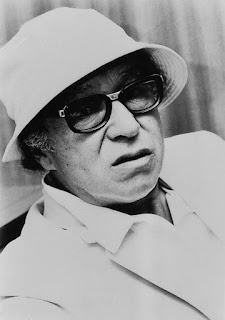 I happened to read an article on the 10 greatest film directors from Japan. Of course on the list were Akira Kurosawa, Yasujiro Ozu and Kon Ichikawa. I thought Masaki Kobayashi deserved to be there. So I went to another ranking and he was #8. His memorable films are highly rated:
I happened to read an article on the 10 greatest film directors from Japan. Of course on the list were Akira Kurosawa, Yasujiro Ozu and Kon Ichikawa. I thought Masaki Kobayashi deserved to be there. So I went to another ranking and he was #8. His memorable films are highly rated:
I am focusing on The Human Condition because I am into the first hour of Part 1 of this trilogy:
Let me quote Wikipedia:
The Human Condition (人間の條件, Ningen no jōken) is a Japanese epic film trilogy made between 1959 and 1961, based on the six-volume novel published from 1956 to 1958 by Junpei Gomikawa.[3] It was directed by Masaki Kobayashi and stars Tatsuya Nakadai. The trilogy follows the life of Kaji, a Japanese pacifist and socialist, as he tries to survive in the totalitarian and oppressive world of World War II-era Japan. Altogether, as a single film it is 9 hours, 39 minutes long, not including intermissions, making it one of the longest narrative films ever made.[4]

I can further add: brutal, bleak, black-and-white, and a struggle to watch. So why am I bothering to post on this movie? Maybe because it is an epic. Further, TCM on three Sundays will show this trilogy. Sorry, you already missed Part 1. On TCM tomorrow (Sunday) night at 8PM for Part 2. Then Part 3 comes on at 10:45PM on Sunday, October 3. If through a search I find where you can view Part 1, I'll later so inform you. Remember, though, that you will spend 9 hours and 39 minutes of your life.
I won't do any reviewing and send you to that
Wikipedia article for details. I can further discourage you by saying that naive and pacifist Kaji goes to war, killing out of necessity and dies at the end without returning to his wife. If you think you have a tough life, you will now have someone to compare who subsists at the worst end of any scale. I will record Parts 2 and 3, but wonder if I will bother to watch. However, I'll enter another quote from
Wikipedia:

The British film critic David Shipman described the trilogy in his 1983 book, The Story of Cinema, as "unequivocally the greatest film ever made."[12] In his review for The New York Times in 2008, A. O. Scott declared, "Kobayashi's monumental film can clarify and enrich your understanding of what it is to be alive."[13] Critic Philip Kemp, in his essay written for The Criterion Collection's release of the trilogy, argues that while "the film suffers from its sheer magnitude [and] from the almost unrelieved somberness of its prevailing mood ... The Human Condition stands as an achievement of extraordinary power and emotional resonance: at once a celebration of the resilience of the individual conscience and a purging of forced complicity in guilt (of a nation and, as the title implies, of the whole human race)."[6] 
About
Masaki Kobayashi, he was born in Otaru in 1916, the city of birth for my
grandfather Kenjiro. Kobayashi went to Waseda University and regarded himself as a pacifist and socialist. He served in the Imperial Japanese Army in Manchuria. He refused any promotion, and was taken prisoner, serving in a detention camp in Okinawa for a year. You get the impression that this film was a story of his life. His
filmography.
A different kind of human condition to give some hope for Humanity:
Got to add one more, for, yes, there is hope:
-
 I happened to read an article on the 10 greatest film directors from Japan. Of course on the list were Akira Kurosawa, Yasujiro Ozu and Kon Ichikawa. I thought Masaki Kobayashi deserved to be there. So I went to another ranking and he was #8. His memorable films are highly rated:
I happened to read an article on the 10 greatest film directors from Japan. Of course on the list were Akira Kurosawa, Yasujiro Ozu and Kon Ichikawa. I thought Masaki Kobayashi deserved to be there. So I went to another ranking and he was #8. His memorable films are highly rated:





Comments
Post a Comment